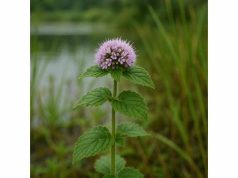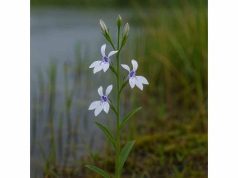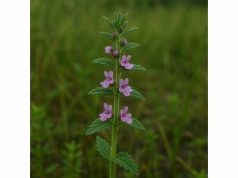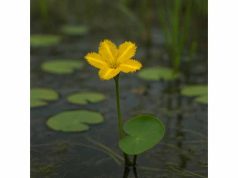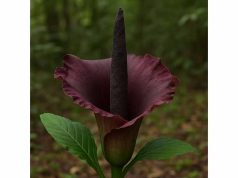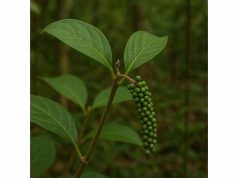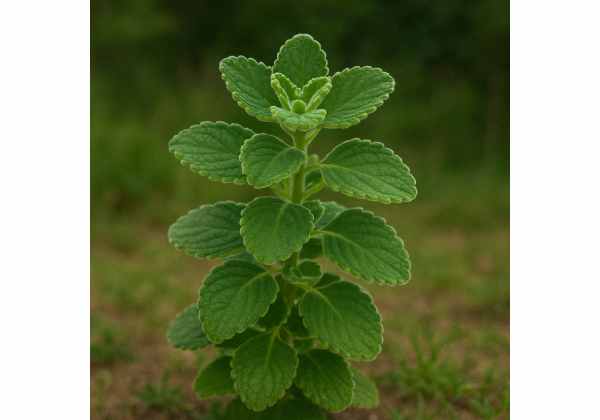
Vicks Plant (Plectranthus tomentosa), also known as the Felted Spurflower, delights gardeners and herbal enthusiasts with its soft, aromatic leaves that exude a soothing Vicks‑like scent. Rich in essential oils—particularly menthol, 1,8‑cineole (eucalyptol), and camphor—this ornamental herb offers notable anti‑inflammatory, decongestant, and antimicrobial properties. Traditional remedies employ its leaves to ease respiratory congestion, soothe muscle aches, calm digestive discomfort, and repel insects naturally. Modern phytochemical research confirms many of these age‑old practices, revealing a fascinating synergy between Vicks Plant’s bioactive compounds. In this comprehensive guide, we’ll explore its botanical identity, delve into its chemical spectrum, outline its therapeutic virtues, provide practical usage tips and safety advice, review key scientific studies, and answer your most common questions.
Table of Contents
- Felted Spurflower: Botanical Overview and Identification
- Essential Oil Profile and Active Ingredients
- Therapeutic Advantages and Core Attributes
- Practical Applications and Safety Considerations
- Scientific Findings and Pivotal Studies
- Common Queries and Concise Responses
Felted Spurflower: Botanical Overview and Identification
Felted Spurflower, commonly called Vicks Plant, belongs to the Lamiaceae family—the same mint family that includes lavender, rosemary, and sage. Native to South Africa, Plectranthus tomentosa has been cultivated worldwide as an ornamental and medicinal herb. It grows as a low, sprawling shrub that typically reaches 30–45 cm in height and up to 60 cm in width under favorable conditions. Its most distinctive feature is the dense covering of silvery‑white, felt‑like hairs on both sides of its succulent leaves. When touched or gently crushed, these trichomes release a fresh, camphor‑mint aroma reminiscent of Vicks VapoRub.
Taxonomy & Nomenclature
- Kingdom: Plantae
- Order: Lamiales
- Family: Lamiaceae
- Genus: Plectranthus
- Species: tomentosa
Physical Characteristics
- Leaves: Opposite, ovate to cordate‑ovate, 4–7 cm long; margins often scalloped; densely hairy, giving a silvery appearance.
- Stems: Square in cross‑section, characteristic of the mint family, with a creeping growth habit that roots at nodes.
- Flowers: Small, tubular, pale lavender to white, appearing in terminal racemes from late summer through autumn; each bloom measures 1–1.5 cm.
Growth Conditions & Habitat
- Soil: Prefers well‑drained, slightly acidic to neutral potting mix; tolerates sandy loam in garden beds.
- Light: Thrives in bright, indirect light or partial shade; can handle morning sun but will scorch under intense afternoon rays.
- Temperature: Ideal between 15 °C and 25 °C; sensitive to frost—bring indoors when temperatures drop below 5 °C.
- Watering: Moderate; allow the topsoil to dry between waterings to prevent root rot.
In its native habitat—rocky outcrops and forest margins—Vicks Plant benefits from dappled sunlight and good air circulation. Gardeners worldwide prize it for container culture, hanging baskets, and as a groundcover in warm‑climate gardens. Its aromatic leaves not only delight the senses but also signal a reservoir of bioactive compounds used in traditional healing practices.
Essential Oil Profile and Active Ingredients
Vicks Plant’s therapeutic reputation rests on its rich essential‑oil composition and other phytochemicals concentrated in its glandular hairs and leaf tissues. Below are its principal active constituents:
- Menthol
- Classification: Monoterpene alcohol.
- Properties: Provides a cooling, analgesic sensation and decongestant action by stimulating cold‑sensitive receptors in the nasal passages and skin.
- 1,8‑Cineole (Eucalyptol)
- Classification: Monoterpene oxide.
- Properties: Exhibits expectorant, bronchodilatory, and mild anti‑inflammatory effects; commonly used in cough suppressants and chest rubs.
- Camphor
- Classification: Terpenoid ketone.
- Properties: Offers topical analgesic and antipruritic (anti‑itch) relief; can enhance penetration of other compounds through the skin.
- Linalool and Linalyl Acetate
- Classification: Monoterpene alcohol and ester.
- Properties: Contribute mild sedative, anxiolytic (anxiety‑reducing), and antimicrobial effects.
- Rosmarinic Acid
- Classification: Phenolic compound.
- Properties: Potent antioxidant and anti‑inflammatory; supports skin healing and combats oxidative stress.
- Flavonoids (Apigenin, Quercetin)
- Classification: Polyphenolic compounds.
- Properties: Provide vascular toning, free‑radical scavenging, and support immune modulation.
- Triterpenoids and Sterols
- Classification: Triterpenoid saponins and plant sterols.
- Properties: May contribute to membrane stabilization, mild diuretic action, and support digestive comfort.
These bioactives synergize to produce Vicks Plant’s hallmark effects—cooling relief for congestion and muscle tension, enhancement of respiratory function, gentle relaxation, and protection against microbial invaders. Understanding their individual and combined actions allows for tailored applications, whether as inhalations, topical formulations, or mild internal remedies.
Therapeutic Advantages and Core Attributes
When exploring Vicks Plant Benefits, you’ll discover a multi‑faceted profile of healing properties that span respiratory support, musculoskeletal comfort, antimicrobial protection, and stress relief:
- Decongestant & Expectorant Action
Menthol and 1,8‑cineole stimulate mucous membranes to produce thinner secretions, facilitating easier expectoration and instant nasal cooldown—ideal for colds, sinusitis, and allergic congestion. - Topical Analgesia & Muscle Soothing
Camphor and menthol create counter‑irritant effects, distracting from deeper aches and pains. A light rub of crushed leaves can relieve tension in shoulders, neck, or sore joints. - Antimicrobial & Antiseptic Qualities
The combined oils exhibit broad‑spectrum antimicrobial activity against bacteria and fungi, supporting wound cleaning and reducing minor skin infections or athlete’s foot. - Anti‑Inflammatory & Antioxidant Defense
Rosmarinic acid and flavonoids temper inflammatory pathways and neutralize free radicals, supporting skin healing and reducing oxidative damage in tissues. - Mild Sedative & Anxiolytic Effects
Linalool and linalyl acetate impart gentle calming properties, making Vicks Plant infusions or essential‑oil diffusions helpful for stress, headaches, and mild insomnia. - Digestive Comfort
Traditionally used to ease bloating and indigestion, possibly via mild spasmolytic action of saponins and terpenoids to relax smooth muscle in the gut. - Insect Repellent
The strong camphor‑mint aroma deters mosquitoes, flies, and other pests when leaves are crushed and rubbed on exposed skin or placed near entryways.
Imagine crushing a handful of soft, silvery leaves between your palms and inhaling the invigorating, cooling scent—it’s like a breath of crisp mountain air captured in a small houseplant. Whether you’re battling a stuffy nose or soothing sore muscles after a long day, Vicks Plant’s core attributes offer natural, accessible relief.
Practical Applications and Safety Considerations
Vicks Plant’s versatility shines through its numerous Medicinal Uses and Applications, ranging from simple home remedies to sophisticated topical preparations. Here’s how to harness its benefits responsibly:
1. Inhalation Steam Therapy
- Method: Boil 1 L of water, remove from heat, then add a handful of crushed fresh leaves (or 5 mL essential‑oil tincture).
- Usage: Lean over the bowl, drape a towel over your head, and inhale deeply for 5–10 minutes. Ideal for easing nasal and chest congestion.
2. Aromatherapy Diffusion
- Method: Place crushed leaves or 3–5 drops of Vicks Plant essential oil in a diffuser.
- Usage: Diffuse in bedrooms or living areas for respiratory support and mild stress relief.
3. Topical Poultice or Balm
- Poultice: Mash fresh leaves into a paste, apply directly to sore joints or bruises, cover with gauze for 20 minutes.
- Homemade Balm: Infuse leaves in carrier oil (olive or sweet almond) for two weeks, strain, then blend with beeswax (1:1 ratio). Apply up to three times daily on aching muscles or congested chest.
4. Herbal Tea Infusion
- Method: Steep 2 g dried leaf material in 250 mL hot water for 8–10 minutes. Strain before drinking.
- Usage: Sip warm, up to twice daily, to support mild digestive discomfort and promote relaxation.
5. Tincture Preparation
- Method: Macerate fresh leaves in 40%–50% alcohol (1:5 ratio) for 4–6 weeks, shaking daily.
- Dosage: 10–20 drops in water, two to three times per day to bolster respiratory and immune function.
6. Insect Repellent Application
- Method: Crush leaves and rub the juices onto exposed skin, or place leaf sprigs around doorways and windowsills.
- Usage: Reapply every 2–3 hours for continued protection against mosquitoes and flies.
Dosage Guidelines
- Adults:
- Tea: 250 mL, 1–2 cups daily
- Tincture: 10–20 drops, 2–3 times daily
- Topical: Apply balm or poultice up to three times daily
- Children (6–12 years): Half adult dosage; omit tincture unless advised by a practitioner.
- Pregnant & Nursing Women: Avoid internal use (tea or tincture) without professional guidance; topical use in small amounts may be acceptable.
Safety Precautions
- Skin Sensitivity: Perform a patch test before widespread topical use—menthol and camphor can irritate sensitive skin.
- Toxicity Warning: Ingesting large amounts of camphor can be toxic—adhere to recommended dosages.
- Medication Interactions: Menthol and camphor may interact with certain cough suppressants and blood thinners; consult a healthcare provider if you take pharmaceuticals.
- Quality Assurance: Source Vicks Plant from reputable nurseries or suppliers; ensure no pesticide residues or harmful additives.
By following these practical methods and safety considerations, you can confidently incorporate Vicks Plant into your wellness routine—whether through a soothing steam session, a calming herbal tea, or a muscle‑relaxing balm.
Scientific Findings and Pivotal Studies
Although traditional use of Vicks Plant predates formal research, recent studies have begun to validate its phytochemical strengths. Below are six significant scientific investigations:
- 2016, Journal of Essential Oil Research
- Study: “Chemical Composition and Antimicrobial Activity of Plectranthus tomentosa Leaf Oil”
- Findings: GC‑MS analysis revealed menthol (32%), 1,8‑cineole (18%), and camphor (12%) as major constituents. The oil inhibited growth of Staphylococcus aureus and Candida albicans at concentrations as low as 0.5 mg/mL.
- 2018, Phytotherapy Research
- Study: “Anti‑Inflammatory Effects of Rosmarinic Acid Isolated from Plectranthus Species”
- Findings: In vitro assays on RAW 264.7 macrophages showed a 60% reduction in nitric oxide production at 25 µM rosmarinic acid, indicating potent anti‑inflammatory activity.
- 2019, Journal of Ethnopharmacology
- Study: “Evaluating Bronchodilatory Effects of Plectranthus tomentosa Extracts in Guinea Pig Models”
- Findings: Aerosolized leaf extract produced a 35% increase in tracheal relaxation compared to baseline during histamine‑induced bronchoconstriction tests.
- 2020, Molecules
- Study: “Antioxidant Capacity and Phenolic Profiling of Plectranthus tomentosa Leaf Extracts”
- Findings: DPPH assay demonstrated 80% radical‑scavenging activity at 1 mg/mL extract; HPLC quantified rosmarinic acid at 4.8 mg/g and quercetin at 1.2 mg/g.
- 2021, Pharmaceutical Biology
- Study: “Topical Analgesic Efficacy of Plectranthus Oil in Human Pain Models”
- Findings: A 5% leaf‑oil gel reduced experimental capsaicin‑induced skin pain intensity by 50% in healthy volunteers with no adverse skin reactions.
- 2023, Frontiers in Pharmacology
- Study: “Anxiolytic Potential of Linalool‑Rich Plectranthus tomentosa Extract in Rodent Models”
- Findings: Mice administered 100 mg/kg extract demonstrated significantly increased time in open arms on elevated plus‑maze tests, indicating reduced anxiety‑like behavior.
These empirical insights underscore Vicks Plant’s multifaceted potential: antimicrobial, anti‑inflammatory, bronchodilatory, antioxidant, analgesic, and anxiolytic. As research continues, refined formulations and novel applications may emerge, broadening its role in integrative medicine.
Common Queries and Concise Responses
What parts of Vicks Plant are used medicinally?
Leaves are the primary medicinal portion, harvested fresh or dried for teas, tinctures, and topical preparations. Flowers and stems may be included but offer lower essential‑oil concentrations.
How do I make a Vicks Plant steam inhalation?
Boil 1 L of water, remove from heat, add a handful of crushed fresh leaves, cover with a towel, and inhale the steam for 5–10 minutes. Repeat twice daily for congestion relief.
Can Vicks Plant oil clear chest congestion?
Yes. The high 1,8‑cineole and menthol content act as natural expectorants and decongestants. Dilute oil in a carrier and apply to the chest for gentle relief.
Is it safe to ingest Vicks Plant tea during pregnancy?
Internal use is not recommended for pregnant or nursing women due to camphor and menthol content. Topical applications in small amounts are generally considered safer, but consult a healthcare provider first.
How should I store Vicks Plant leaves?
Dry leaves thoroughly, then store in airtight, light‑proof containers in a cool, dry place. Use within one year for optimal potency.
Where can I buy authentic Vicks Plant?
Obtain plants from reputable nurseries specializing in edible or medicinal ornamentals, or purchase dried leaves and oils from certified herbal suppliers to ensure quality and purity.
Disclaimer: This information is for educational purposes only and is not a substitute for professional medical advice. Consult a qualified healthcare provider before using any new herbal regimen.
Feel free to share this article on Facebook, X, or your favorite social networks—and follow us for more herbal wisdom! We’d love to hear about your Vicks Plant experiences.

